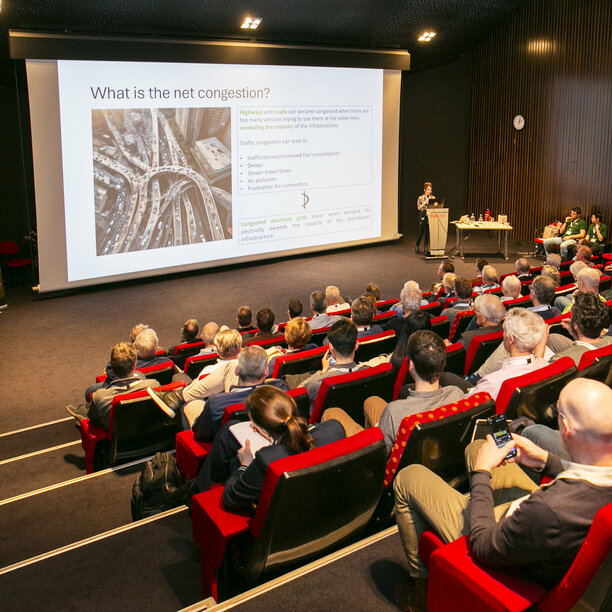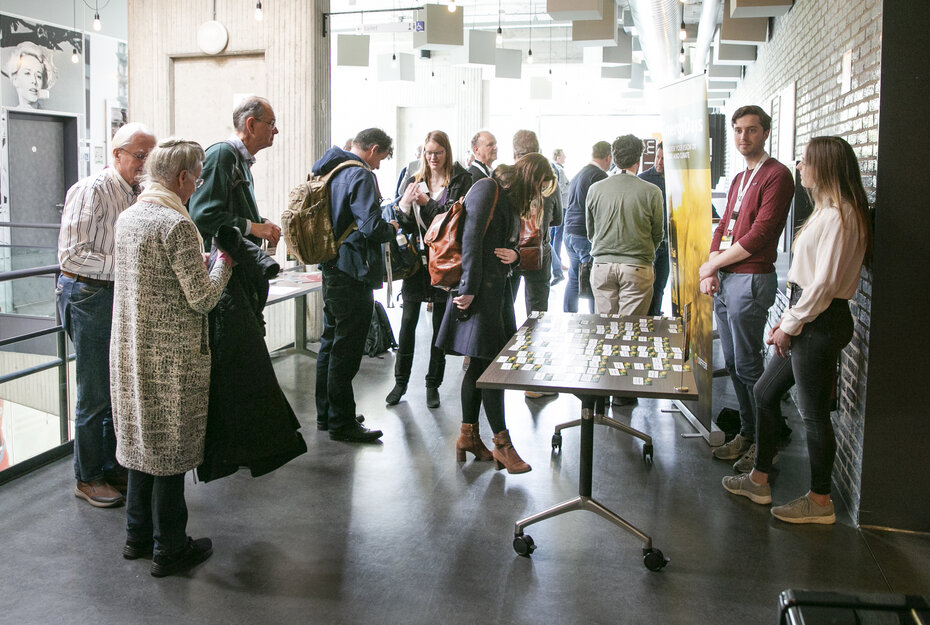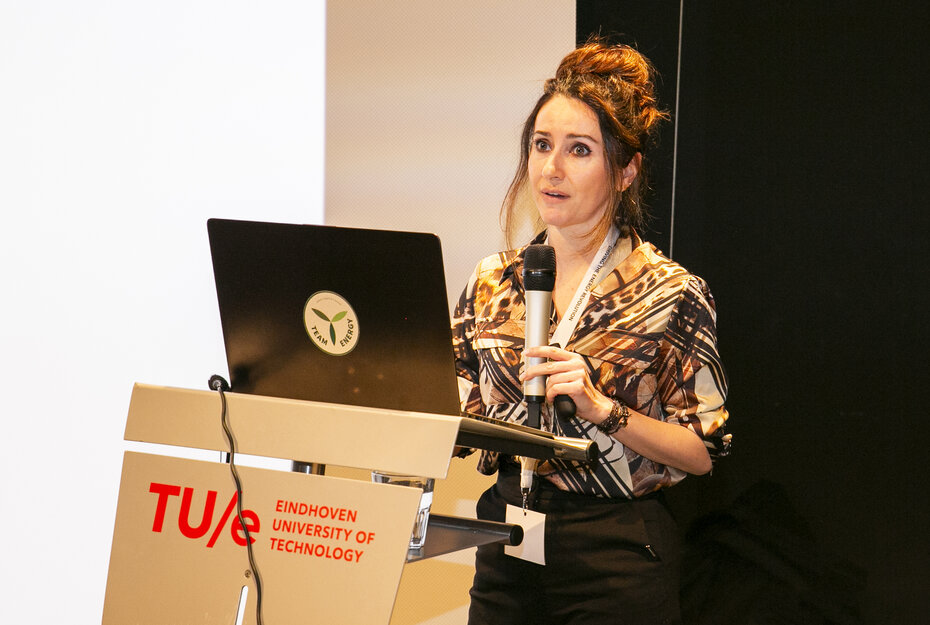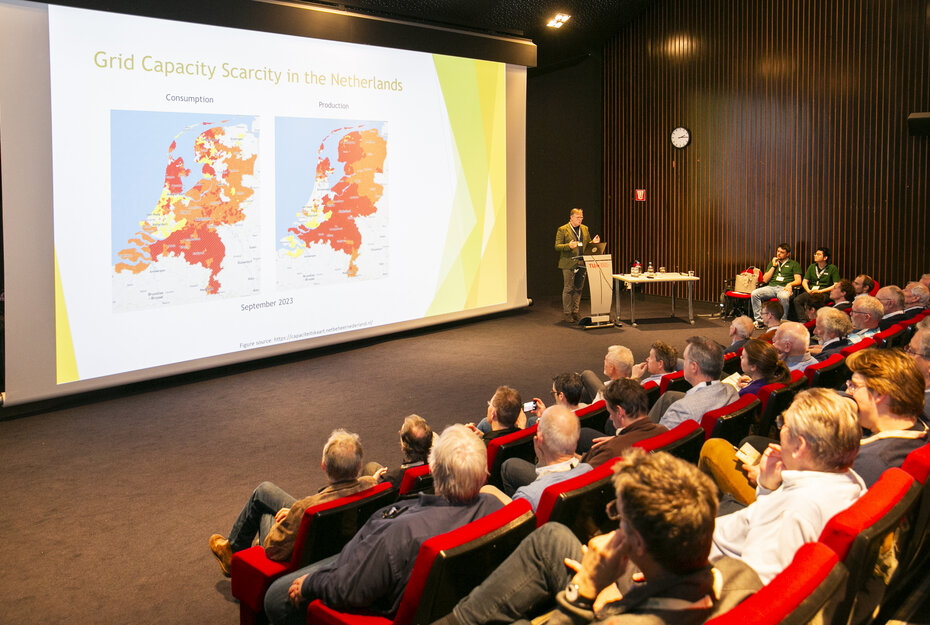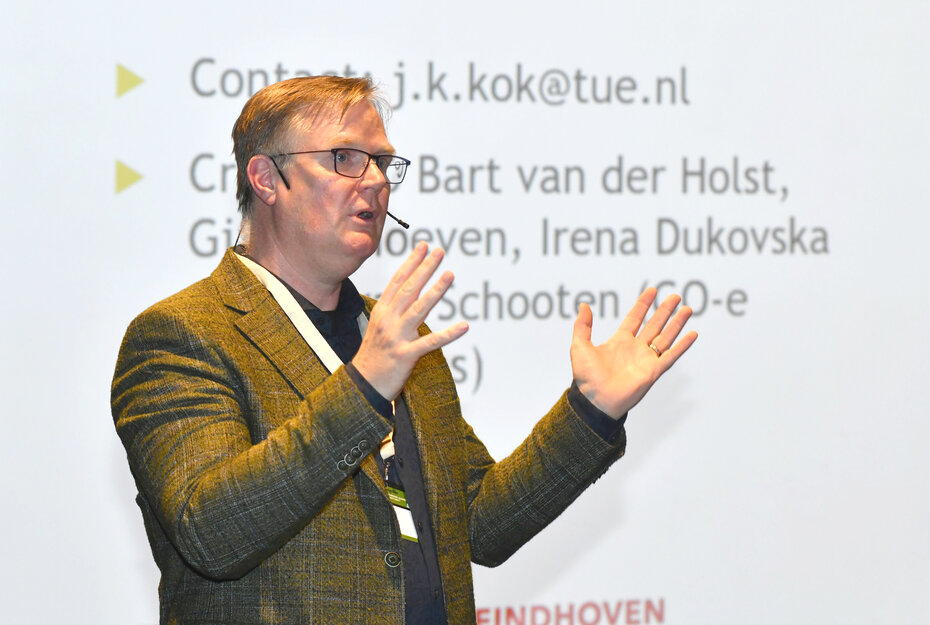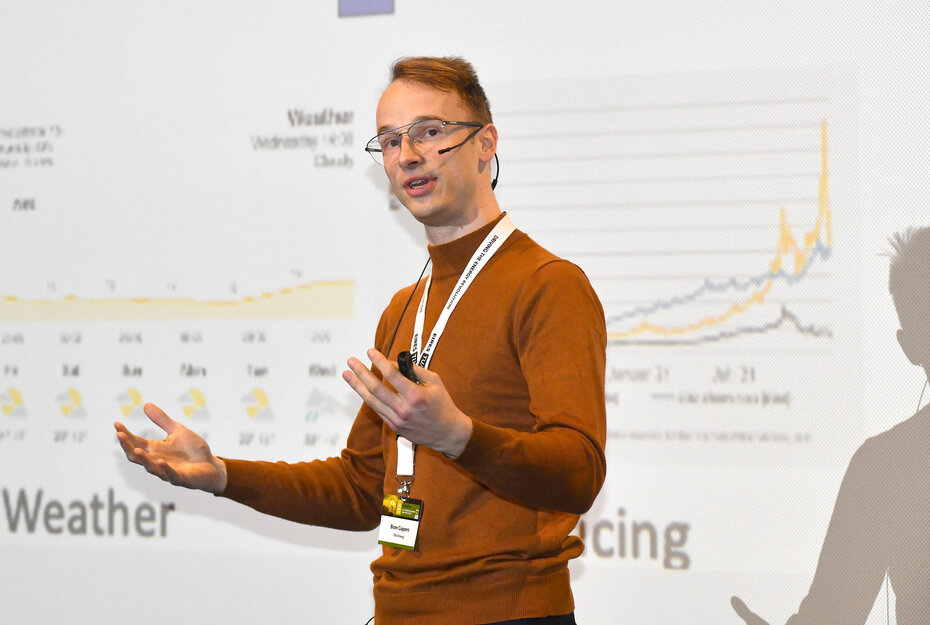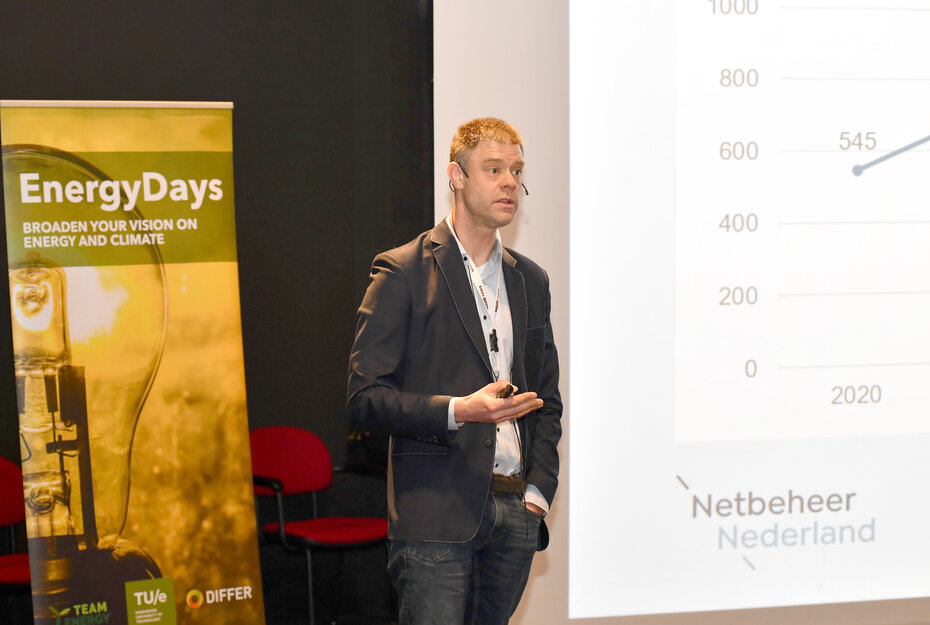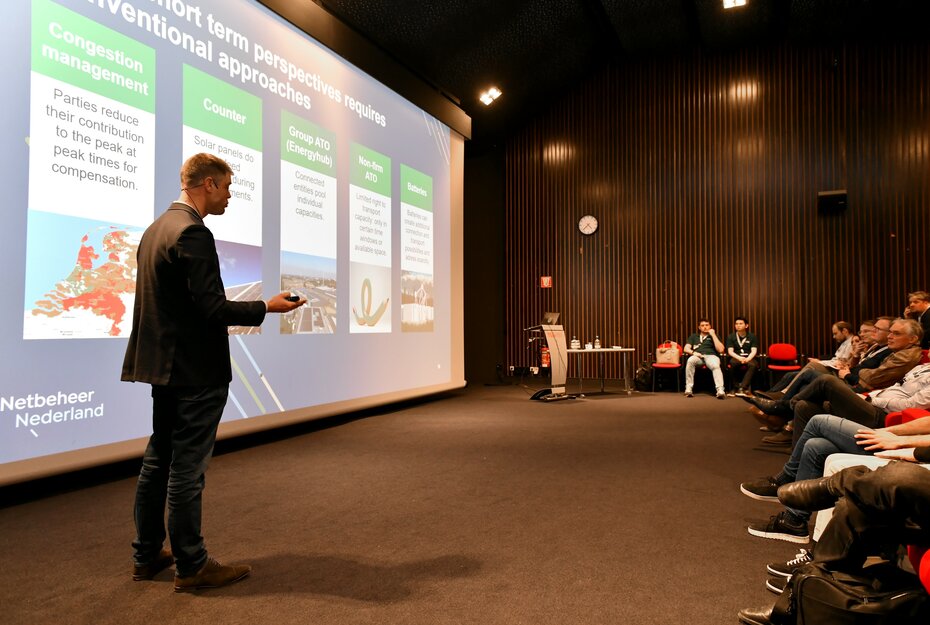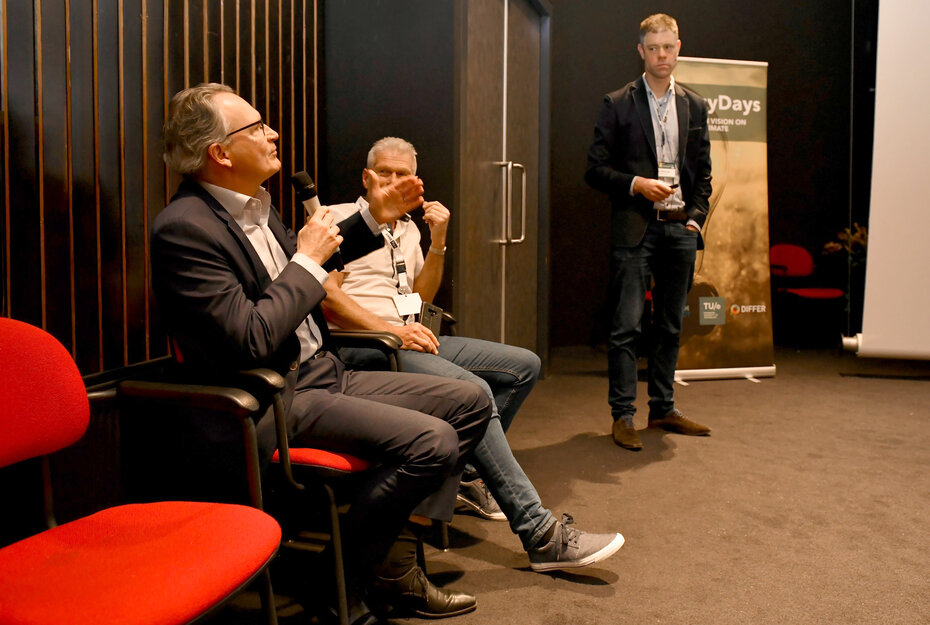During her opening statement, chair of the day Christina Papadimitriou compared net congestion to traffic congestion. ‘Just as on the highways, the electrical infrastructure gets clogged if the demand exceeds the capacity.’ As a result of increased demand for electricity, an ageing infrastructure, limited investments in grid expansion and the variability of renewable energy generation, grid congestion is already making the Dutch headlines on a regular basis.
During the latest edition of EnergyDays, Koen Kok from TU/e, Bram Cappers from Tibo Energy and Han Slootweg from Enexis addressed questions like: Will grid congestion keep growing? Is the current wave of investments in the network sufficient? Are current measures fast enough? And are current innovations future proof?
Multi-faceted challenges
First speaker Koen Kok, Professor of Intelligent Energy Systems at TU/e, stressed the importance of upgrading the power grid, which he backed up with examples of recent headlines on power outages and grid operators denying new grid connections to industry, schools and housing projects. According to Kok, the biggest problems we have to tackle might not be of a technical nature. ‘Besides having a need for new cables and transformers, we are facing challenges in regulation, for example when it comes to allocating grid capacity; procedures that simply take too long, and a lack of qualified personnel.’
We should change the way we trade electricity, Kok argued. ‘We need to fuse markets and systems and be aware of lock-ins. Are the pathways we are currently exploring to reach our 2030 and 2050 goals still open, or are current short term solutions blocking long term innovations? That is where we as a university have a role to play and need to keep asking the right questions.’
Navigating energy
‘The electricity grid is not full, it is merely jammed,’ stated Bram Cappers, co-founder of Tibo Energy, a software company that organizes energy for campuses. ‘If we would even out the energy demand over the net, we would only be consuming 30 percent of the total amount of energy that is available. So there is plenty of space, we simply need to use that wisely.’
In traffic, people use navigation apps to avoid traffic jams. Cappers and his colleagues decided to build a similar system to route energy. Their solution is based on digital twin technology. ‘We are offering a Google Maps function for energy highways,’ Cappers stated. ‘Our machine learning models provide expectations about the energy consumption and generation, and based on that advise for example what would be the best time to charge and discharge a battery system.’
Cappers views the energy system as an orchestra. ‘Even if you have a system entirely made out of smart devices, it will not function optimally as long as every system only thinks for its own. You need a conductor who keeps the overall target in mind and directs all of the talented individuals when to start, when to stop, and how fast and hard to go. That conductor is exactly what we provide.’
Waiting lists
As a final speaker, Han Slootweg, director of asset management at grid operator Enexis, provided some insights into the daily practice of regional grid operators in the Netherlands these days. ‘As a society, we are shifting from oil and gas to electricity. Even though the national grid provider TenneT is stepping up its investments in on shore grid and we as regional grid operators are increasingly investing as well, we simply cannot keep up with the required pace. At the moment, nearly 4000 parties are waiting to get connected to the grid, or to get an upgrade of their existing connection. When it comes to supplying energy to the grid, the waiting list even comprises 6000 parties.’
Even though Slootweg stressed that the greatest challenge at the moment was ‘to build, build, build, and find the people to carry out the work and the space where to put all of the new assets’, in the short run, building offers too little perspective, he said. ‘We need to implement more flexibility in the generation and use of electricity.’
He mentioned some of the steps Enexis is currently taking. ‘We are negotiating with parties to reduce their contribution to the peaks in exchange for compensation. We are offering customers connection and transportation agreements that provide them with limited rights to capacities, namely only in certain time windows. For example, we have such an agreement with a public transport company that charges their electric buses only at night. And we are looking into possibilities to limit the feed of solar panels during peak moments.’
‘Grid congestion is here to stay,’ chair Papadimitriou concluded. ‘If we want to keep the lights on, we need to collaborate among government, academia and industry to both develop new technical solutions and implement soft measures to change the behavior of producers and consumers.’
